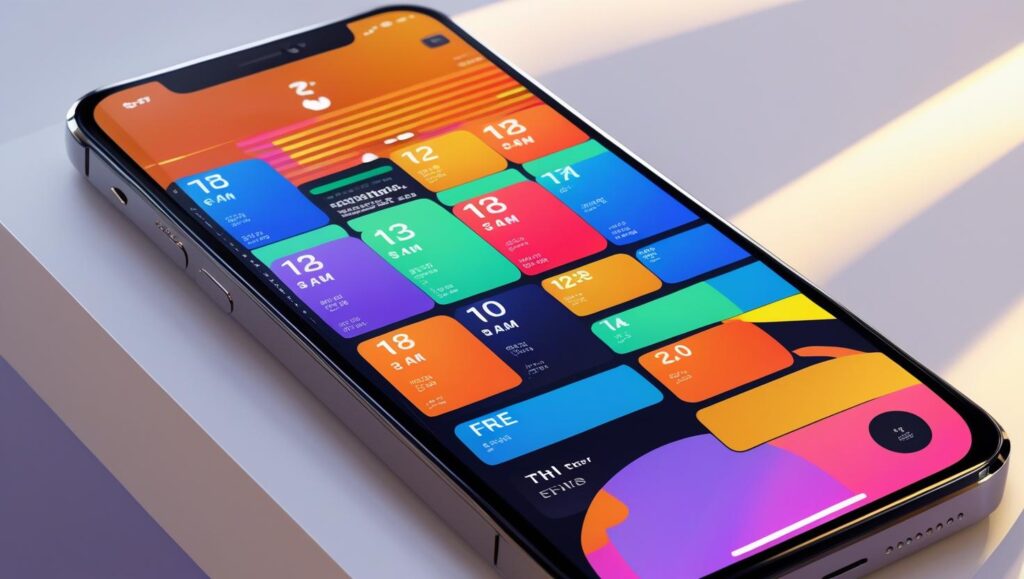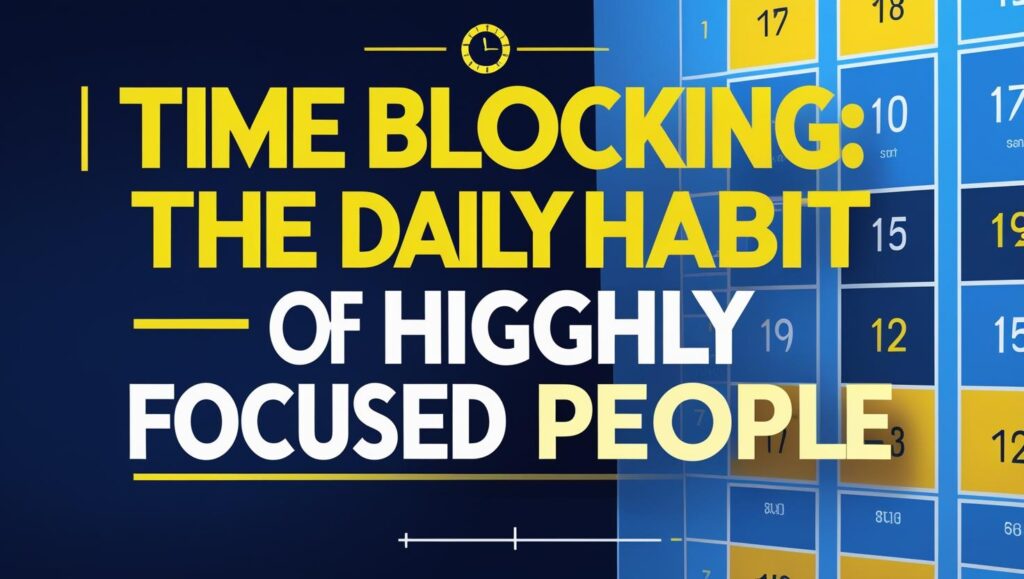Introduction: Take Back Control of Your Time
Most people feel like there are never enough hours in a day. Between work, personal commitments, and endless distractions, it’s easy to lose control. That’s where time blocking comes in. It’s not just a productivity hack — it’s a lifestyle shift. When you start assigning every hour a purpose, you stop reacting and start designing. Whether you’re an overwhelmed professional, a creative soul, or someone juggling multiple roles, time blocking can help you reshape your life and achieve true balance.

What Is Time Blocking and Why Does It Work?
Time blocking is a time management method where you divide your day into distinct blocks of time. Each block is dedicated to a specific task or group of tasks. This technique eliminates decision fatigue and helps you stay focused throughout the day.
Unlike a traditional to-do list, time blocking turns intentions into commitments. You’re not just saying what needs to be done — you’re deciding when you’ll do it. That clarity is powerful. It tells your brain: this is what I’m doing now, and nothing else matters until it’s done.
The Science Behind Time Blocking
Blocking your time leverages principles from cognitive science. Humans are most effective when they focus on one task at a time. Each interruption or task switch pulls our attention away and adds recovery time.
Time blocking creates structure. It’s like building a daily roadmap for your brain. Research from MIT and Stanford confirms that reducing task switching significantly improves focus and overall performance. With time blocking, you train your brain to stay in one lane — and go faster.
🧪 For deeper insight, check out this external resource on The Psychology of Time Management.
How to Start Time Blocking (Step-by-Step Guide)
1. Audit Your Current Time Use
Start by tracking how you currently spend your time. You can use apps like Toggl, Clockify, or even a simple notebook. Identify time-wasters, repeated distractions, and energy-draining tasks.
2. Identify Priorities
What really matters to you each day? Is it work? Learning? Family time? Self-care? Group your top tasks under themes or categories.
3. Assign Time Blocks to Tasks
Now divide your day into 30-minute or 1-hour blocks. Assign tasks to these blocks. Be specific. Instead of “work on blog,” write “Draft intro and outline for blog post.”
4. Include Breaks and Buffers
Don’t schedule every minute. Leave buffer time for breaks, transitions, or unexpected events. A good rule: for every 2 hours of work, include a 15-minute break.
5. Review and Adjust Weekly
No plan is perfect. Every Sunday, review what worked and what didn’t. Time blocking is a tool that improves with feedback.
Benefits of Time Blocking You’ll Notice Right Away
✨ Improved Focus: You’ll finally finish those tasks that always get pushed.
🧘♂️ Reduced Stress: Your day has structure, so your brain can relax.
🕐 More Free Time: Paradoxically, planning every hour frees up more time.
📈 Better Results: When you consistently focus, your performance improves.
Time Blocking vs. To-Do Lists: What’s Better?
To-do lists are great for collecting tasks, but they don’t show when things get done. That’s where they fall short. You can keep writing to-dos all day, but you won’t see progress unless you schedule them.
Time blocking forces prioritization. It protects your time from distractions. And unlike to-do lists that grow longer every hour, time blocking sets healthy boundaries for what can realistically be accomplished.
Want to explore how this fits into rebuilding habits? Read How to Rebuild Your Life When You’re Feeling Stuck — it complements time blocking beautifully.
Time Blocking Tools You Can Try Today

Here are some tools to help you get started:
- 🗓️ Google Calendar: Color-code your blocks. Sync across devices.
- 📱 Notion: Create aesthetic templates and custom planning pages.
- 🖊️ Paper Planners: Sometimes analog works best. Use bullet journaling.
- 💻 Trello + Clockify: Great combo for task management + time tracking.
For advanced features, check out TimeBloc — an intuitive app designed for time blocking newbies and pros alike.
Real Life Examples of Time Blocking in Action
Blocking your time isn’t just a theory—it’s a real-world strategy used by some of the most effective people across different walks of life:
🧠 Barack Obama, during his presidency, used time blocking to schedule workouts, reading, and focused decision-making to avoid mental fatigue from constant choices.
📝 Ava DuVernay, award-winning director, blocks creative time each day where no calls or meetings are allowed, protecting her best energy for deep work.
📚 Benjamin Hardy, a productivity psychologist, plans his entire week every Sunday using time blocks for writing, family, and thinking time.
👨👩👧👦 Busy parents use time blocking to create structured mornings, limit screen time, and reserve evenings for quality family connection.
📱 Even social media managers block time for content creation, analytics, and community interaction to stay organized.
Time blocking is flexible, and it works for anyone who wants clarity in their day—no matter their lifestyle or profession.
Common Mistakes to Avoid
❌ Over-scheduling: Don’t pack every minute. Leave white space.
❌ Ignoring energy levels: Tackle hard tasks when you feel most alert.
❌ Being inflexible: Life happens. Time blocking is a flexible structure, not a prison.
Final Thoughts: Design the Day, Design the Life

Time blocking isn’t just a productivity trick — it’s a life design strategy. When you give each part of your day a purpose, you create intention. You no longer drift through hours, overwhelmed and reactive. Instead, you move with clarity and confidence.
The real gift of time blocking is not just better focus or more completed tasks — it’s the quiet satisfaction of knowing your time is being used for what matters most.
So grab your calendar, plan your day, and take the first step toward a well-designed life. ⏳
Want to explore more tools to build intentional habits? Read our blog: Micro-Journaling: Powerful 5-Minute Rituals to Rebuild Life
